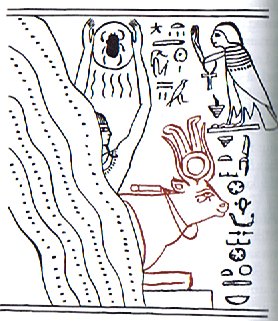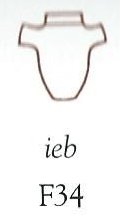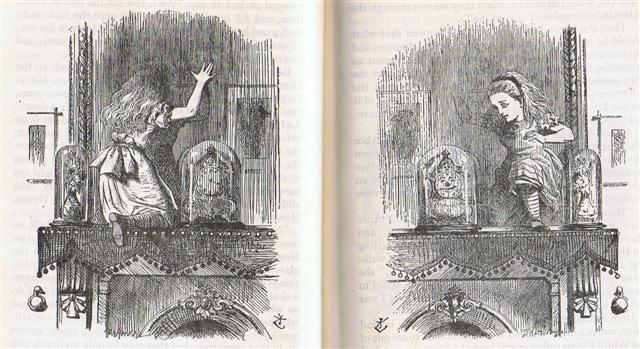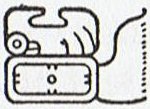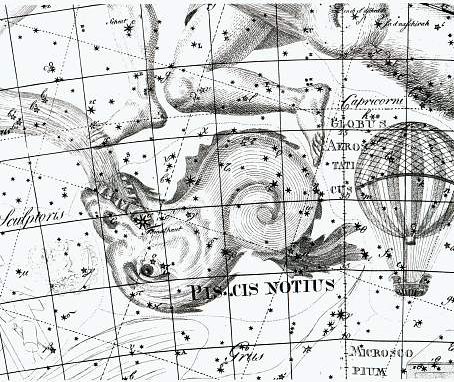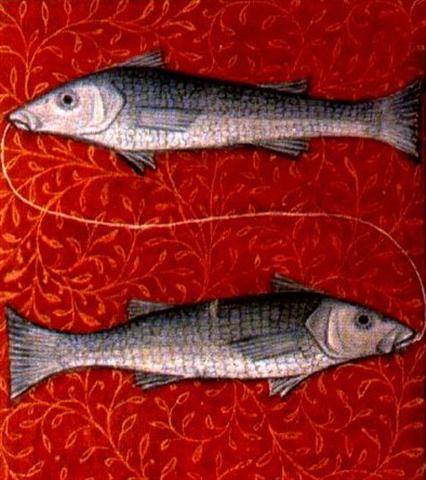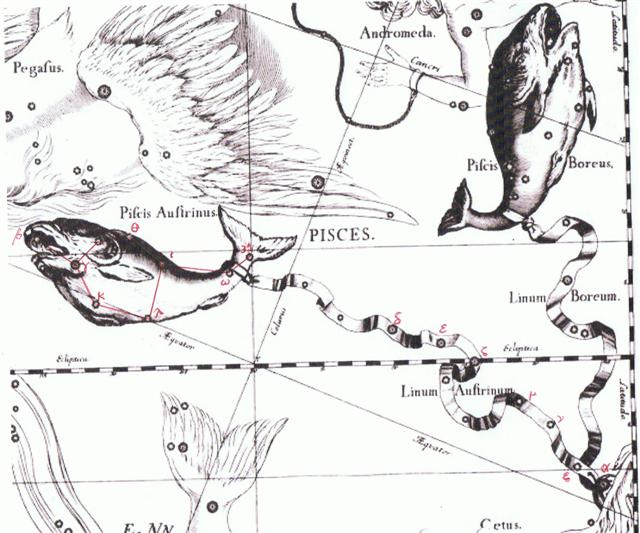From perceiving the similarity between vaha kai in Gb5-10 and vaha kai in Bb4-17 the implication should be a common fundamental meaning. What looks alike should presumably also be alike:
In Gb5-10 position 363 (= 11 * 33) suggests a 'door of exit' - with the cycle closed in contrast to the open 'door of entrance' suggested by viri:
And if we should count also the empty (zero) glyph space before Ga1-1 the total length of the G text would be 472 (= 365 + 107 = 16 * 29½) days and the ordinal number of Gb5-10 would become 364 (= 2 * 182 = 4 * 91 = 13 * 28 = 52 weeks = 26 fortnights). ... Time flows on and not until its measures have been completed in full can there be notches (nights) carved into the wood ...
... Although the calendar has 365 days for a year this is due to the fact that the Earth has to turn around an extra day in order to compensate for how the direction to the Sun changes during a year ...
... In the present context 'mouth' has an additional connotation, given that it refers in part to Heart of Earth, the deity called 'Mundo' today. This is the great Mesoamerican earth deity, the ultimate swallower of all living beings, depicted in Classic Mayan art (in the Palenque relief panels, for example) as an enormous pair of jaws upon whose lips even the feet of great lords must rest in precarious balance, and into whose throat even great lords must fall. Turning to the contemporary scene, daykeepers who visit the main cave beneath the ruins of Rotten Cane, the last Quiché capital, speak of the danger of falling into 'the open mouth of the Mundo' there, which is said to be more than four yards wide ...
Counting 362 (= 181 * 2) days ahead from Ga1-1 will bring us back to Beid (*) / Lesath (†):
And 3 nights later the Full Moon would be at the Heart:
This was 45 (= 360 / 8) days after the Horn.
In Roman times the date for the Heart ought to have been 27 days later in the Sun calendar, viz. in 'October 27 (300) = 'April 28 (472 / 4) + 182. ... In the inscriptions of Dendera, published by Dümichen, the goddess Hathor is called 'lady of every joy'.
For once, Dümichen adds: Literally ... 'the lady of every heart circuit'. This is not to say that the Egyptians had discovered the circulation of the blood. But the determinative sign for 'heart' often figures as the plumb bob at the end of a plumb line coming from a well-known astronomical or surveying device, the merkhet. Evidently, 'heart' is something very specific, as it were the 'center of gravity' ... See Aeg.Wb. 2, pp. 55f. for sign of the heart (ib) as expressing generally 'the middle, the center'. And this may lead in quite another direction. The Arabs preserved a name for Canopus - besides calling the star Kalb at-tai-man ('heart of the south') ... Suhail el-wezn, 'Canopus Ponderosus', the heavy-weighing Canopus, a name promptly declared meaningless by the experts, but which could well have belonged to an archaic system in which Canopus was the weight at the end of the plumb line, as befitted its important position as a heavy star at the South Pole of the 'waters below'. Here is a chain of inferences which might or might not be valid, but it is allowable to test it, and no inference at all would come from the 'lady of every joy'. The line seems to state that Hathor (= Hat Hor, 'House of Horus') 'rules' the revolution of a specific celestial body - whether or not Canopus is alluded to - or, if we can trust the translation 'every', the revolution of all celestial bodies. As concerns the identity of the ruling lady, the greater possibility speaks for Sirius, but Venus cannot be excluded; in Mexico, too, Venus is called 'heart of the earth'. The reader is invited to imagine for himself what many thousands of such pseudo-primitive or poetic interpretations must lead to: a disfigured interpretation of Egyptian intellectual life ... ... Proclus informs us that the fox star nibbles continuously at the thong of the yoke which holds together heaven and earth; German folklore adds that when the fox succeeds, the world will come to its end. This fox star is no other than Alcor, the small star g [80]near zeta [ζ] Ursae Majoris (in India Arundati, the common wife of the Seven Rishis, alpha-eta Ursae ...
... The Arabs in the desert regarded it as a test of penetrating vision; and they were accustomed to oppose 'Suhel' to 'Suha' (Canopus to Alcor) as occupying respectively the highest and lowest posts in the celestial family. So that Vidit Alcor, et non lunam plenum, came to be a proverbial description of one keenly alive to trifles, but dull of apprehension for broad facts ... ... the lining up of Canopus with zeta, more often with Alcor, the tiny star near zeta (Tom Thumb, in Babylonia the 'fox'-star) has remained a rather constant feature, in Arabic Suhayl and as-Sura. This is the 'birth' of the valid representatives of both the poles, the sons of Mitra and Varuna and also of their successors ... ... In April 9 (99) the Full Moon was at Spica which was located exactly at Alcor. 16 days later the unseparable pair would return to visibility, viz. in April 25 (115). This was therefore the face value of the 25th night of Vaitu Nui (Great Water), when the Explorers sailed off towards Easter Island ... The 'lady of every heart circuit' can be contrasted to the 'Heart of Earth swallowing all living beings'.
... As concerns the identity of the ruling lady, the greater possibility speaks for Sirius, but Venus cannot be excluded; in Mexico, too, Venus is called 'heart of the earth' ... However, the Arabs saw Antares as Al Kalb (The Heart) and the Polynesians saw Antares as the star in front (Ana-mua) - at the beginning of the southern summer. Maybe, therefore, the star at the back side (Aldebaran, Ana-muri) should be compared to the Arabs Kalb-at-tai-man ('heart of the south', Canopus). To illustrate this 'door of exit' (north of the equator) the glyph type vaha kai might have been judged appropriate for people south of the equator who would welcome the time when the Sun reached Antares and the Full Moon was at Aldebaran and the winter should be gone.
As to Rotten Cane it is hard not to think of April 25 = May 22 (142) - 27 = April 9 + 16, 3² + 4² = 5² as the place (Gb8-2) where the idea of a swallowing mouth (vaha kai) was half a year away at Fom-al-Haut (the Mouth of the Fish):
In the B text there is a pair of vaha kai glyphs 27 days apart:
|
||||||||||||||||||||||||||||||||||||||||||||||||||||||||||||||||||||||||||||||||||||||||||||||||||||||||||||||||||||||||||||||||||||||||||||||||||||||||||||||||||||||||||||||||||||||||||||||||||||||||||||||||||||||||||||||||||||||||||||||||||||||||||||||||||||||||||||||







